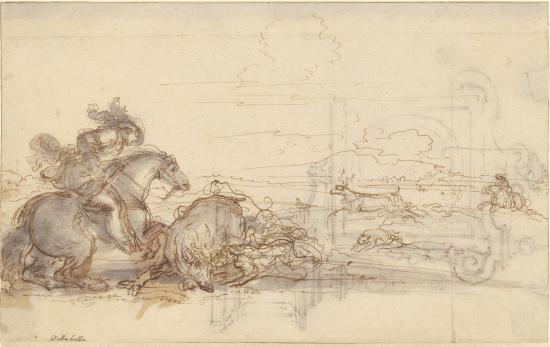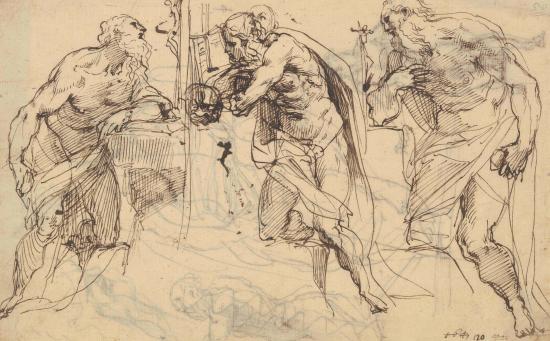Städel Museum
10 October 2024 to 12 January 2025
The Städel Museum presents the great masters of Italian Baroque draughtsmanship. For the brothers Agostino and Annibale Carracci, Guercino, Stefano della Bella and Gian Lorenzo Bernini, drawing was a central component of their artistic work. In their drawings, they not only laid the foundations for their paintings, sculptures or prints, but also demonstrated the independence of the medium. Executed with pen and brush or black or red chalk, the sheets are sketches, studies or precisely rendered individual works. They impress with their sweeping lines, their dramatic chiaroscuro and their extraordinary expressiveness. From 10 October 2024 to 12 January 2025, the Städel Museum will be showing 90 of these remarkable Italian Baroque drawings from its own collection in an exhibition parallel to the Frankfurt Book Fair with Italy as this year’s Guest of Honour, inviting visitors to an intimate encounter with the artistic drawings of a bygone era.
The scholarly analysis of the drawings was made possible by the generous support of the Gabriele Busch-Hauck Foundation in Frankfurt. This multi-year research project has produced a wealth of new information on individual artists and their working methods, the subjects depicted and the techniques used, as well as on contemporary and later collectors.
The 17th century was a time of change in Italy. Baroque art emphasized movement and dynamism, contrasts and the play of light and shadow. These characteristics can be seen not only in the paintings and sculptures, but also in the drawings of the period. The artists studied individual motifs, figural groups, postures, draperies and sequences of movement. They drew from nature, developed complex pictorial narratives and created designs for large-format works. The emotional spectrum of their depictions ranges from delicate and introspective to ecstatic, expressive and sometimes cruel. The works on paper were often the basis for paintings, sculptures or prints and refer to the exchange between artists and patrons. They are therefore not only an expression of individual artistic creativity, but also a reflection of larger cultural contexts.
IMAGES

Giuseppe Passeri, (1654–1714) An angel crowning two saints, Saint Andrew and a knight saint, as martyrs
Stefano della Bella (1610-1664), Deer hunting, ca. 1654
Jacopo Chimenti, called da Empoli (1551–1640), Artist at a draughtsman’s table, ca. 1620–1630
Guercino (Giovanni Francesco Barbieri) (1591—1666), Christ in Emmaus ca. 1619
Giovanni Benedetto Castiglione, called Il Grechetto (1609–1664), Woman with child riding an ass, ca. 1635–1640
Giovan Gioseffo dal Sole (1654—1719), Virgin and Child ca. 1700 (?)
Gian Lorenzo Bernini (1598—1680), Portrait of a man, ca. 1635
Ferdinando Galli da Bibiena (1656/57–1743), Columned hall, at left a portal (left half), early 18th century
Christofano Allori (1577—1621),Study of the head of a youth with visor cap ca. 1600
Annibale Carracci (1560—1609), Study of Venus at Rest ca. 1602
Agostino Carracci (1557–1602) Study for a St Jerome 1600/1602